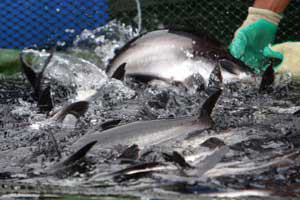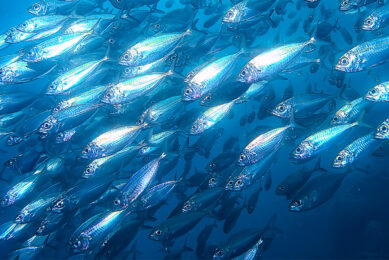FAO highlights importance of Canadian aquaculture

The Food and Agriculture Organization of the United Nations (FAO) described Canada’s aquaculture industry as invaluable to future global food security at the same time a new report highlighted that simply boosting seafood consumption to levels recommended by Canada’s Food Guide could save thousands of lives each year.
“A significant increase in Canada’s aquaculture productivity and production would make a significant impact on global food supply,” emphasized Mr. Mathiesen. “As an advanced and environmentally conscious country, Canada also has a chance to lead the way: to disseminate the knowledge, secure investments, and contribute significantly to achieving our common goal of global food security.”
This FAO message comes at the same time a new analysis paper, Farmed Seafood and Canadian Health: How Higher Seafood Consumption Can Save Lives, released by Canadian Aquaculture Industry Alliance (CAIA) showed that a recommended 30% increase in the average seafood intake by Canadians would be a gain in both economic and health terms. Simply adhering to Canada’s Food Guide recommendations for fish consumption would substantially reduce the rate of coronary disease.
“Seafood is a lifesaver – literally,” said Ruth Salmon, executive director of CAIA. “By simply increasing the amount of seafood Canadians consume we achieve an enviable win-win of saving lives and increasing economic benefits to the country.”
According to Statistics Canada data, approximately 47,000 Canadians will die from coronary disease in 2013. Based on recent academic and health literature, the CAIA analysis demonstrates that the number of deaths in Canada from coronary disease could be reduced by as much as 5,800 per year if the Canada Food Guide’s recommended level of seafood consumption were achieved. This represents a potential benefit to Canadian society of more than $40 billion per year.
“The health benefits of a diet that makes frequent use of seafood are well documented, but output from traditional fisheries isn’t enough,” added Salmon.
Given that approximately 50% of the seafood sold by Canadian retailers originates from farmed sources, it is not surprising that aquaculture, the farming of aquatic plants and animals, is contributing in an important way to enhancing human health by supplying these essential nutrients.
“Aquaculture is the only way to address the gap,” said Salmon. “Canadian seafood farmers are meeting market demands for fresh, local seafood. Moreover, they’re increasing the supply of fish and contributing to lower seafood prices; ensuring that all Canadians have access to a variety of affordable and nutritious seafood year-round.
To learn more about aquaculture in Canada visit www.aquaculture.ca.











